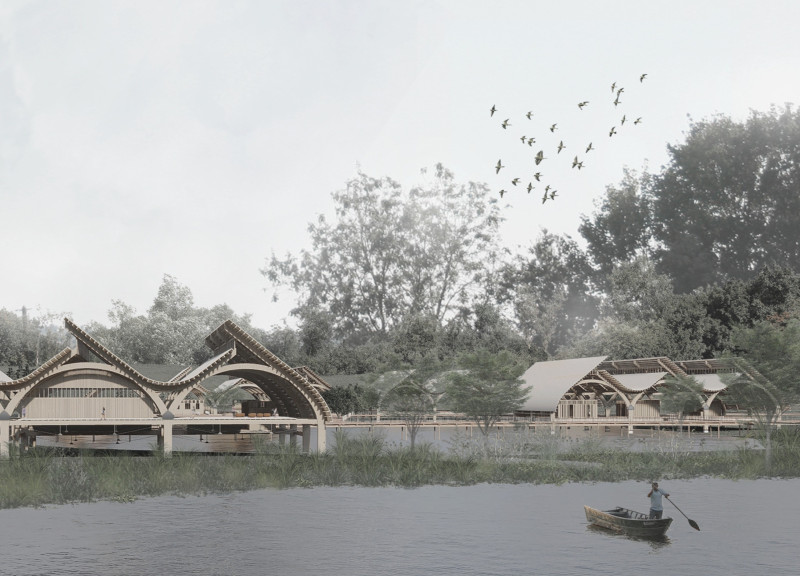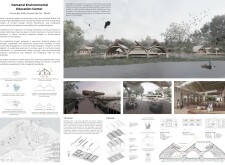5 key facts about this project
### Overview
The Pantanal Environmental Education Center is located in Corumbá, Mato Grosso do Sul, Brazil, within the world's largest tropical wetland, the Pantanal biome. The center addresses pressing environmental issues including climate change and resource management through a design that prioritizes educational engagement and environmental awareness. Its objectives are to create a communal space that connects visitors with the local ecosystem while facilitating educational programs focused on biodiversity and cultural heritage.
### Architectural Form and Materiality
The structure features large, curvilinear roof forms that are inspired by traditional indigenous architecture, promoting a visual and functional connection to the local heritage. The design is organized into distinct sections that accommodate various educational activities and community interactions. Sustainable materials play a significant role in the construction, with the use of acai fibers, bamboo, and engineered wood beams, which enhances structural integrity while minimizing environmental impact. Reinforced concrete is utilized in the foundation for stability, paired with natural finishes to harmonize the building with its surroundings.
### Sustainable Practices and Community Integration
The center incorporates advanced bioclimatic design strategies, such as cross-ventilation and maximized natural lighting, to enhance resource efficiency. Solar panels and water storage systems are integrated to support sustainability commitments. Furthermore, the design reflects native ecological principles and includes a modular layout that allows flexibility for educational and community-focused activities. This facilitates ongoing engagement with local residents, transforming the center into a living laboratory for environmental research and sustainable practices, while also educating visitors about indigenous cultural heritage.






















































